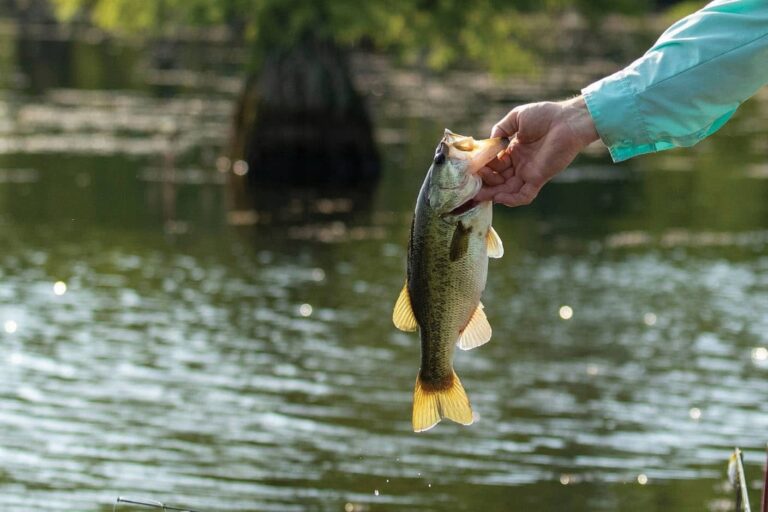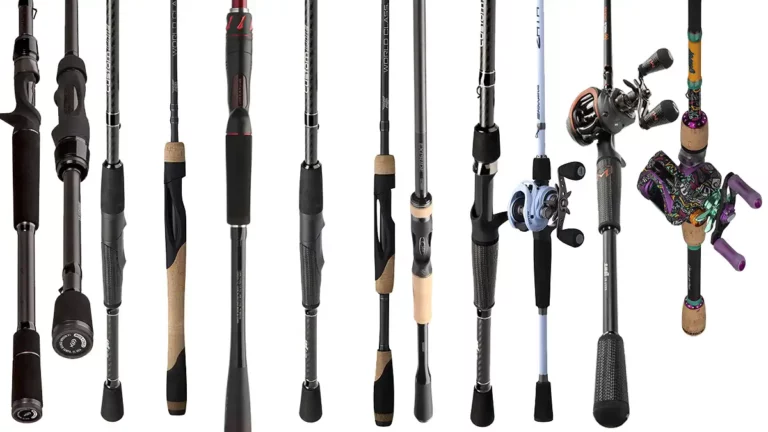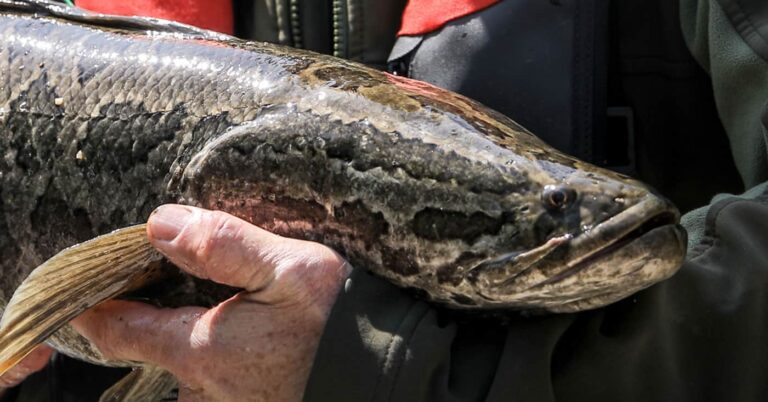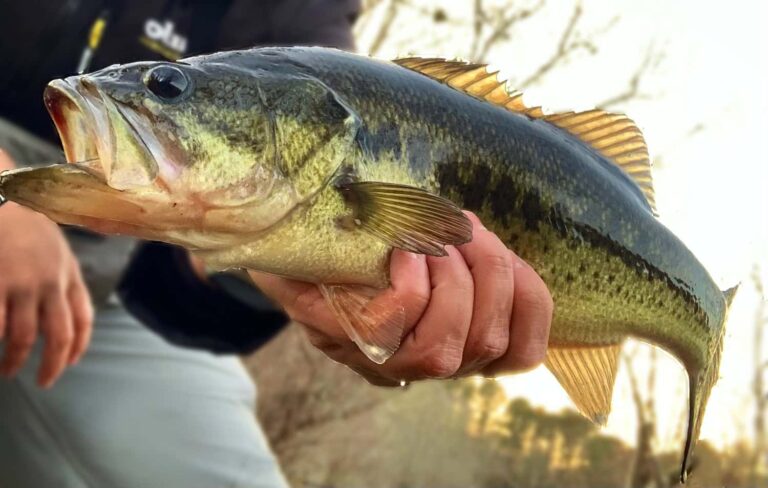Spinnerbait Blades Explained
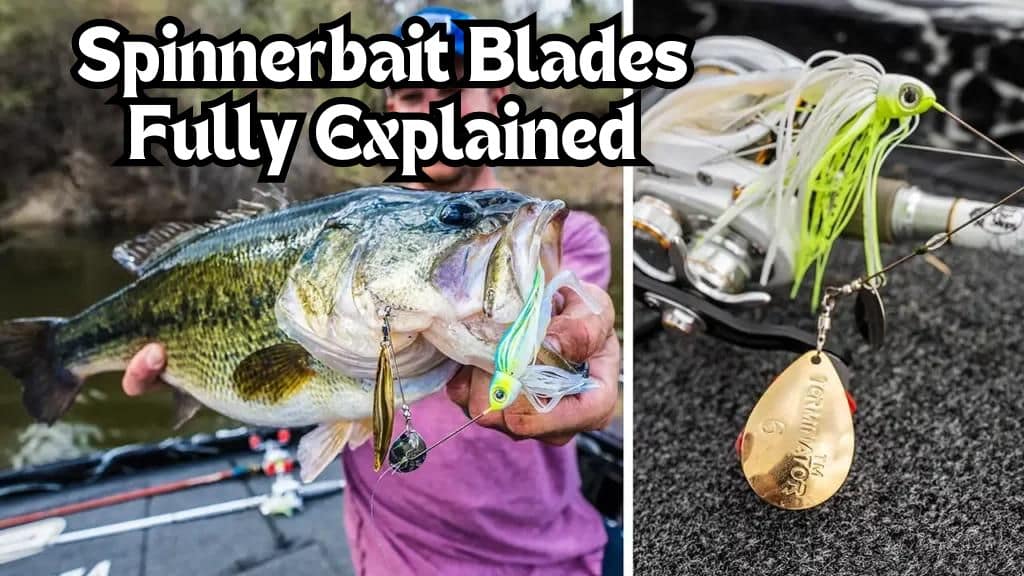
The blades are the most important part about the spinnerbait. And with a bunch of different shapes, sizes, and colors, it can be tuff to pick out the right ones.
So let me fully explain spinnerbait blades for you.
Shapes of Spinnerbait Blades
There are three different shapes of spinnerbait blades. Each one is unique in appearance as well as functionality.
The three shapes are willow leaf, Colorado, and Indiana.
Willow Leaf Blades
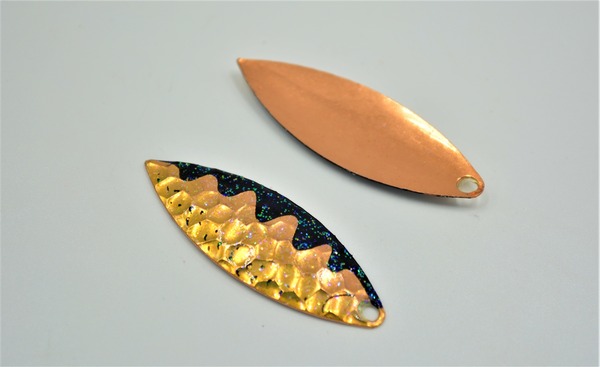
Willow leaf blades are certainly the most popular blade shape and look just like, well, a willow leaf.
They are very long, slender, and pointy. This shape creates a much tighter rotation as the blades spin in the water.
This tight rotation creates less vibration, more flash, and less resistance, which allows you to retrieve willow leaf blades much faster.
When to Use Willow Leaf Blades
There are two main situations to use willow leaf blades on you spinnerbaits.
1. Clear Water
First is clear water. In clear water, you don’t need as much vibration to get the bass’s attention and get them to come eat you lure.
They can already see very well, so less vibration and more speed is very important.
Because the willow leaf blades have that tighter rotation, they create much less resistance and drag in the water, allowing you to retrieve much quicker.
And this speed is very important in clear water. Think about it, a spinnerbait isn’t really the most natural looking bait.
A big metal wire, spinning blades. That’s not exactly realistic.
So you want to be able retrieve the spinnerbait in quickly so that bass don’t get a great look at the lure and don’t have time to analyze it too closely.
Also Read: Best Color Spinnerbait for Clear Water
2. Warm Water
The second situation is warm water. This again comes back to the speed of the spinnerbait.
Warm water bass are very aggressive and like to hunt with speed. So you want your power fishing lures to match that speed.
Burning a spinnerbait near by a bass will get loads of reaction bites in warm water, where as slow rolling a spinnerbait won’t get the bass as fired up or desperate to attack.
Colorado Blades
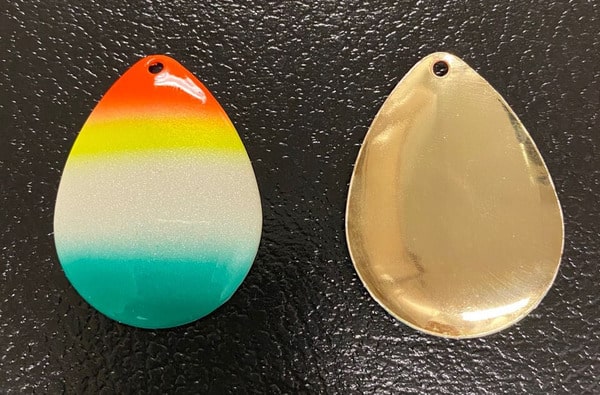
Colorado blades are the exact opposite. They are very short, wide, and round in shape.
Almost just like a big circle. As you can expect, that shape causes Colorado blades to have a very wide and slow rotation.
That wide, thumping rotation puts off tons of vibration and causes your spinnerbait to slow way down as you retrieve it.
When to Use Colorado Blades
Just like the willow leaf blades, Colorado blades are best used in two main situations.
1. Muddy Water
Colorado blades put off a ton of vibration. That makes it much easier for bass to feel and find the spinnerbait as it comes through the water.
In this muddy water, bass can’t see much or at all, so they rely on vibrations to hunt their food.
And the high resistance of the Colorado blades slow down the spinnerbait a lot.
But in muddy water, this is actually a good thing.
The bass can’t really see your bait either way, so you don’t need to worry about how natural it looks and how long the bass are looking at it.
It is better to slow down the spinnerbait and give those bass more time to hone in on the lure.
In muddy water, it can take bass much longer to locate and attack their prey, so slowing down your lure retrieve makes a big difference.
These same rules apply to night fishing for bass, which is why a Colorado bladed spinnerbait is one of the most popular nighttime bass fishing lures.
2. Cold Water*
When the water is cold, so are the bass. So you want to slow down your lures to give the more sluggish bass time to eat it.
However, I put an asterisk next to “cold water” because there is really only one cold water time of year where Colorado bladed spinnerbaits are good.
This is the pre-spawn. During the pre-spawn, the water is still cold, but bass are becoming very aggressive in order to bulk up for the spawn.
So you can get away with using a power fishing lure like a spinnerbait.
But during the late fall and winter months, bass will likely be too sluggish to eat a big, aggressive lure like a spinnerbait.
Indiana Blades
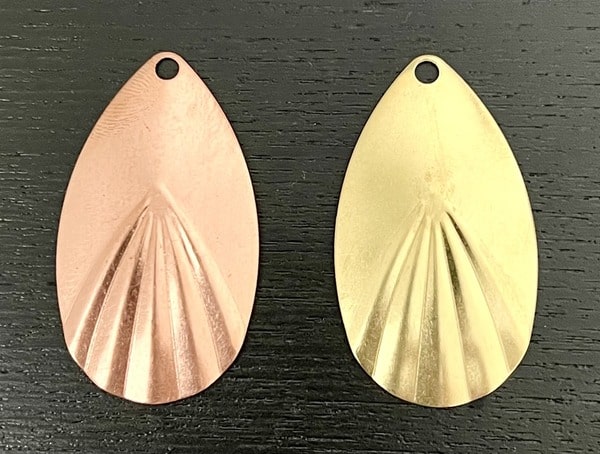
Indiana blades are essentially a mix between a willow leaf and a Colorado blade.
They are a bit longer and skinnier that the Colorado blades, but still much fatter and rounder than the willow leafs.
So Indiana blades have a rotation radius that falls right between the other blades. In theory this makes them more versatile.
When to Use Indiana Blades
You might have noticed that I said, “In theory” the are more versatile a second ago.
This is because Indiana blades just don’t really fit any circumstance.
To be honest, I have just never found a time or place where and Indiana blade out performs the other two.
I’m not sure exactly why, but I guess a Jack of all trades is just a master of none.
So my personal recommendation is simply to not use Indiana blades.
Of course, feel to try them out and experiment, but I would keep it simple and stick to the other two blades.
Blade Combinations
I’m sure you’ve seen a few different blade combinations out there.
The most popular is the double willow leaf.
However a close second is a small Colorado up top with a bigger willow leaf behind it. I’ll keep it simple.
- Double Willow Leaf: Most flash, best visual appeal, and most natural.
- Top Colorado – Back Willow: Good balance of speed, stability, and vibration. Shines in stained water.
- Double Colorado: Most vibration and slowest speed.
- Single Colorado: Still lots of vibration, but a bit more natural and easier to fish.
Blade Colors
There are also three styles of blade colors. Combining this with blade shape creates tons of combinations and can get a bit intimidating.
So again, I’ll keep it very simple.
Silver Blades
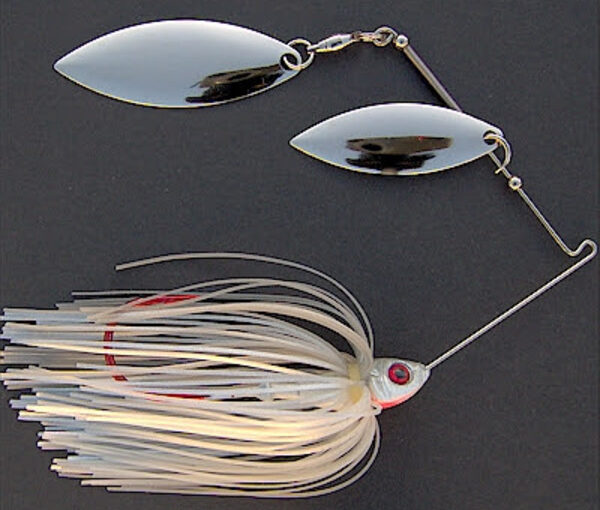
- Clear Water Fishing
- Imitates Shad the Best
- Very Universal
Gold/Copper Blades
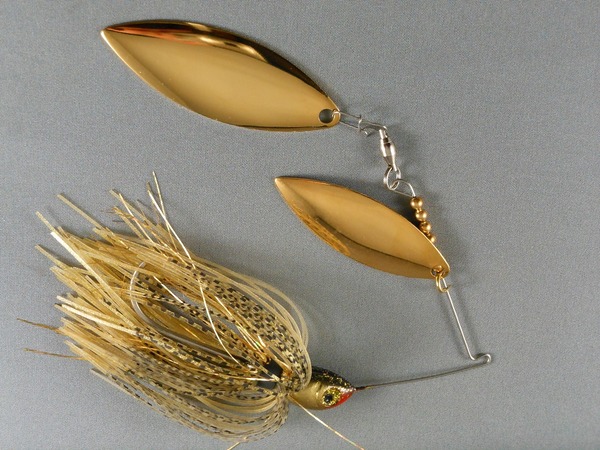
- Stained or muddy Water Fishing
- Imitates Bluegill the Best
- Very Universal
Painted Blades
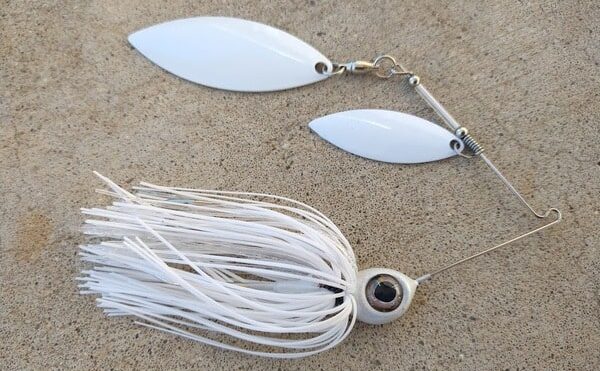
- Muddy Water Fishing
- Amazing for Smallmouth Bass
- Can Be Great in Very Pressured Lakes
- Allows You to Match the Hatch More Accurately
Also Read: When to Use a Spinnerbait
Reeling this In
The right spinnerbait blade can make all the difference in your fishing success.
Willow leaf blades are best for clear and warm waters due to their speed and minimal resistance.
Colorado blades excel in muddy and pre-spawn cold waters with their strong vibrations and slow rotation.
Indiana blades, while versatile, often don’t outperform the other two.
Blade colors—silver, gold/copper, or painted—should match water conditions and fish preferences.
Understanding these elements will help you choose the best spinnerbait for any situation, increasing your chances of a successful catch.


